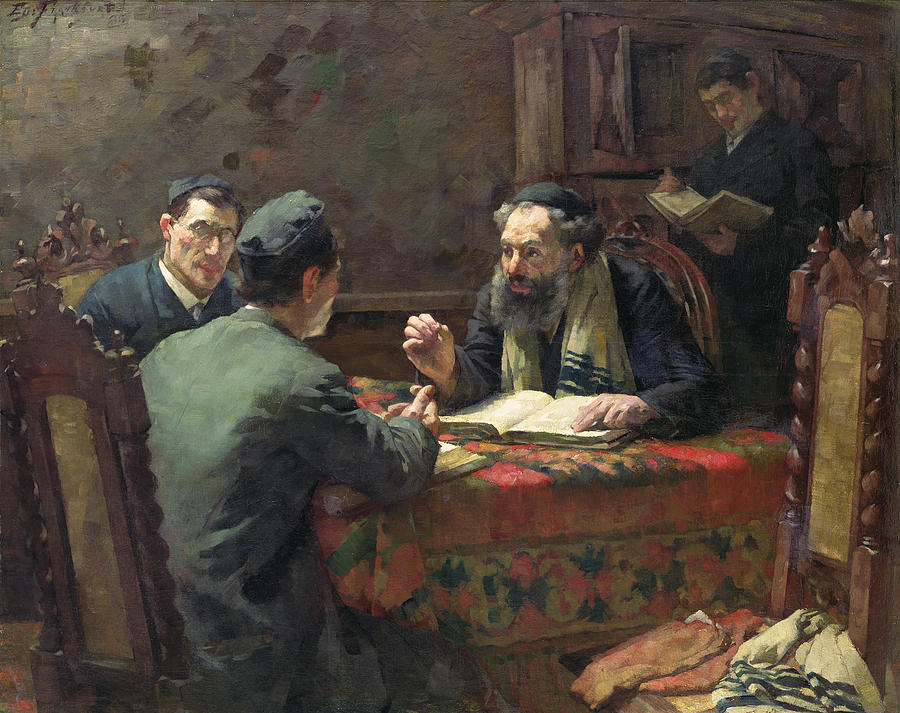Overview: Addressing the issue of parallels between the divinely-inspired Torah and the man-made Ancient Near East documents. Parallels include phraseology, civil laws, and religious rituals. Introducing the partially-divinely-inspired model for Torah.
One of the key components of bible criticism is connecting various Torah rituals and ideas to contemporary ones found in the Ancient Near East. Many civil laws and rituals are found in the history of the Egyptians, Assyrians, Hittites, Babylonians, and other nations. This looks very suspicious, to say the least, and would definitely point to a human author who seemed to be inspired by the surrounding cultures of his time and place.
But we will attempt to paint a different picture. To do so, we will split the question into three different elements. There’s the question of similar phrasing than those found in other documents. Then there’s similar civil laws. And then there’s similar rituals.
ANE terminology
Torah shares many phrases that were common in religious or military documents of the ancient Near East. The style of writing in general also aligns with that time’s writings. But this isn’t really an issue. Since the recipients of the Torah were Ancient Near East natives, therefore it made sense to speak it them in their language and with the phrases they were familiar. This is even more so if the Torah was written by humans (albeit divinely inspired) who were especially familiar with contemporary literature and common speech of their time and place.
In fact, a famous rabbinic commentator uses this understanding to explain an interesting phenomenon. Ralbag in his commentary at the very end of the Book of Exodus asks a simple question. Why does the Torah repeat all the details of the building of the Tabernacle if all the designs and dimensions were already described at length earlier on when God was commanding Moses how to build the Tabernacle? He suggests that the Torah was written in accordance with contemporary ways of writing. He suggests that the style of writing at that time was to double documents and not much emphasis was put into shortening the document wherever possible, as is the custom of writing in modern times. Ralbag would have been pleased to know that indeed modern findings of ancient documents noticed this very phenomenon: repetition.[i] The Ralbag, like many other great Jewish sages, was open to the idea that Torah was written in a human fashion and used the style of writing native to its time and place.
ANE civil law
Many of the civil laws in Torah have striking parallels to the laws found in the famous Code of Hammurabi.[1] Perhaps the most well-known example is the law of Lex Talionis, otherwise known as “an eye for an eye” that is executed in both biblical law[ii] and in the Code of Hammurabi[iii]. Other very similar laws are clearly visible between the two. Was the Torah inspired by the Code of Hammurabi?
Civil law is different than rituals because they are laws that essentially make sense and are there to govern the society as a whole. Civil law is formed by the government (whether it be the Code of Hammurabi or the Torah) with the intention of producing the best civil outcome to conflicts that shall occur. These laws can change over time as society changes itself but as a whole, countries share almost identical civil laws. Both being in the ANE in the second-millennium B.C.E., both civil laws were specifically geared for their populations at that region and that time.[2] This is why they are so similar. Civil law is largely a reflection of the social behaviors and norms of a specific time. Yet despite this, there are some flaws in a legal system if the morals at the time are corrupt. Torah came to fill in those gaps in the legal system. This is why Torah significantly updated the laws of slavery to reflect a more humane society (see here).
Another great example in which Torah explicitly diverges from civil law of the time is the law of the goring ox. In Hammurabi law, if a person’s ox gores and kills the child of another, then his very own child is killed in retribution. This was a form of lex talionis, a severe version of an eye for an eye. Torah saw the immorality in that and states in Ex. 21:28-31.
“And if a bull gores a man or a woman and [the person] dies, the bull shall surely be stoned, and its flesh shall not be eaten, and the owner of the bull is clear.
But if it is a [habitually] goring bull since yesterday and the day before yesterday, and its owner had been warned, but he did not guard it, and it puts to death a man or a woman, the bull shall be stoned, and also its owner shall be put to death,
insofar as ransom shall be levied upon him, he shall give the redemption of his soul according to all that is levied upon him.
Or if it gores a young boy or a young girl, according to this ordinance shall be done to him.”
Commentators have been struggling to understand the relevance of the last line for centuries. Until a discovery was made. The Code of Hammurabi discovered in 1901 makes reference to the Babylonian law of the goring ox. It says that if the ox gores and kills the son of another, then the owner’s son is to be killed. Same with a daughter for a daughter. It is in this context that the Torah warns against punishing the child for the sins of their father. The Torah saw the benefits of the common law of a goring ox but made changes to the immoral aspects of it.
ANE rituals
Perhaps the greatest of questions on Torah is why many of its ritual laws are strikingly similar to those of other cultures at ancient times. This would seem to suggest that the Torah authors were inspired by other cultures of their time.
Examples of such laws include circumcision, menstrual period, and the sacrificial system – all of which were widespread rituals in the ancient world at large.
The earliest of Jewish thinkers to address this question is Maimonides in his work of Moreh Nevuchim.[iv] He speaks regarding the sacrificial system in the Temple and attempts to explain the reason for why the Torah mandated sacrifices in the Temple. In a highly critiqued and acclaimed response, Rambam suggests that the Torah commanded the sacrifices because that was the common practice of the time in service of the pagan gods. God realized that the Jews would be tempted to offer sacrifices to the pagan gods and therefore instructed them instead to sacrifice the animals to the One True God. It’s not that God needs our sacrifices, it’s rather that He wants us to stay away from the tempting obsession of the time to offer sacrifices to the various pagan gods.
Sure this explanation of Maimonides is controversial but this opens up the possibility of such an explanation even in the Orthodox circles of theology. The explanation that various laws in Torah were inspired by contemporary practices was used by the Maimonides to explain other laws (chukim) as well. Some laws are commanding the Israelites to do the ritual so that they don’t do it with the other gods (e.g. sacrifices), while other laws were specifically negated so that the Israelites won’t follow in the pagan culture (e.g. shaving the beard).[3]
It must be noted, that although the Torah is connected to the time and era that it was given, it still was the most revolutionary document that diverted from conventional thought and practice of its time. There are many works that address the revolutionary aspects of Torah.[v]
Other rituals like circumcision that was widespread in ANE cultures actually makes sense from a theological perspective. It was a form of consecrating the child to God and His service. It was the psychological effect for both the parents of the child and the child himself that was beneficiary in the circumcision process. It is similar to the concept of wearing the kippah to constantly remind ourselves that we belong to and are in service of the Lord. This may be why other cultures and the Torah commanded to circumcise. This same suggestion may be applied to the sacrificial system as well. It was perhaps the psychological effects, the idea of consecrating from your very own possessions and livestock and giving them up to God, that was the purpose of the sacrificial laws.
Yet another example of shared ritual in the ANE is the menstrual taboo of the woman. The laws of Niddah (a menstruating woman) in the Torah were found in cultures all around the world as far as ancient Japan.[4]
The suggestion we suggest for the concept of Niddah in the ancient cultures, can apply to rituals like sacrifices and circumcision as well.
As per the standard Orthodox view, there are spiritual benefits to the chukim laws (rituals) which is the reason why the Torah has commanded to do them. It’s not because of any circumstantial elements but rather purely spiritual and purely eternal. These spiritual effects of the Mitzvah are invisible to our limited, physical, and mundane eyes.
This can be the explanation for practically all the chukim laws. But if this is the explanation for the rituals, why then do other cultures have the same rituals if they had no Revelation from God?
The answer is that they did have some form of Revelation. True it wasn’t in the form of a Torah and Revelation at Sinai, but they still had prophets. When prophecy was around, back in the days, the non-Jews also had some prophets. The Torah speaks of the Edomite Prophet Bilaam. In addition to prophecy, the Torah references the concept of kishuf (sorcery) as being a common practice of the time. This would indicate that the ancient world was in tune with various spiritual elements that we today are unfamiliar with.[5]
With this knowledge the ancients were able to see the spiritual effects of circumcision, sacrifices, and the impurity of Niddah blood. The Torah as well of course was aware of the spiritual effects of these rituals and channeled them to the service of God instead of the service of pagan gods.
Another possibility was that the Torah saw the (minor) health benefits from restraining from sex during the menstrual period. It also could have seen the psychological benefits to it. By restraining from sex for a small period of time the husband and wife are likely to develop a relationship that extends past the lust involved in their marriage. Another possible benefit from Niddah laws is the build-up of sperm-count in the male that overall gives most couples a bigger chance of having more children. Parents would strive for as many children as possible in that day and age. Many children wouldn’t survive birth or childhood due to the primitive medical knowledge of the time. Therefore parents would aim for as many conceptions as possible. The laws of Niddah helped that process. Torah values large families in spirit of the verse “be fruitful and multiply.”
Is the Torah eternal?
Based on the above, what can we say about the eternity of Torah? Being that the Torah was given to the Israelites some 3,000 years ago, at a time that looked very different than ours – how can we know that Torah still applies nowadays with a changing environment and very different culture?
This question was so powerful that it caused movement after movement to diverge from Torah Law to “evolve” and “adapt” to modern society. This includes movements like Christianity, the Jewish Reform movement among other historical movements within Judaism.
The question is based on the premise that the Torah’s rituals were based on primitive culture at the time and are therefore subject to change. But what if that wasn’t the case. What if the Torah’s rituals have a spiritual effect as we suggested earlier about Niddah. That would mean that these rituals aren’t subject to change based on physical circumstances.
Moreover, even if theoretically they should be changed due to the change in modern society, the Torah hasn’t said that they are subject to change. There’s no expiration date provided by the Torah on these rituals. As a matter of fact, the Torah specifically says that these laws are not subject to change. They are eternal for all generations.
Adjacent to many of its laws, the Torah uses the term “an everlasting statute for all generations.”[vi] In addition, see Numbers 15:22-23 where is encourages “… to do…all the commandments that God commanded you through Moses to do from the day he commanded it and onward.” Deuteronomy 5:26 also says the commandments are everlasting: “May they be of such mind, to revere Me and follow all of My commandments all the days, that it may go well with them and their children forever!” From Deuteronomy 29:28 it’s crystal-clear that the commandments are everlasting: “The hidden are for God and the open are for us and for our children forever, to do all these commandments of this Torah.” There’s also a law that forbids us from subtracting any Mitzvah:[vii] “The Mitzvah that I command you today you must watch to do, do not add thereon nor subtract.”
After describing the Jewish exile, the Torah continues forecasting the Ultimate Redemption.[viii] One of the pivotal features mentioned of the era is the performance of all Mitzvos: “And the Lord your God will circumcise your heart and the heart of the offspring, to love the Lord your God with all your heart and all your soul, so that you may live… And you will return to listen to the word of God and do all of His commandments that I command you today.[ix] Evidently, the commandments of Torah couldn’t have expired prior this Messianic Era that has yet to occur.
As for why the Torah would establish these laws for eternity, several explanations are possible: (1) These rituals have spiritual ramifications. (2) It is a matter of principle. Once people see that parts of Torah can be changed, they may end up changing the parts that shouldn’t be changed. Therefore, as a protection against this, it was decided that no laws be changed (to the exception of civil laws, see “The Ever-Evolving Morals and Biblical Law”). (3) A respect for tradition as part of the Jewish culture, and culture ultimately effects our long-term survival and religious commitment.
Ugaratic god of EL
Inscriptions known as Ugaratic texts found in Canaan between the years 1400-1200 B.C.E. revealed to us many Canaanite gods and deities. Surprisingly enough, among them were the names of the One God found in the Torah, including Elokim (plural of the EL), and Y-H-V-H. The first of these names was considered the Supreme Lord who was then proceeded by Baal—the one who dealt with the worldly matters. This led some critics to believe that the Torah was influenced, among others, by the Canaanite pagan worship god names and lacks its own objective truth.
This can be answered in several ways. First, Jewish tradition has it that the Patriarch Abraham taught many people of Canaan the One True God of Israel.[x] This God taught by Abraham may have slipped into pagan worships. Second, the Torah teaches us that the early generations knew of God and served Him.[6] Jewish tradition has it that a few generations after Noah, the people began to misunderstand the character of God and His intervention in this world, which ultimately led to Paganism.[xi] Be it as it may, the concept of EL and Y-H-V-H is well understood to have made its way down into the Canaanite traditions mixed with their pagan beliefs, originating from their early knowledge of Him back in the days of Noah. Thirdly and most importantly, the term EL and/or Y-H-V-H may have very well been the Semitic term for “God” without specification of His specific character whether part of a monotheistic belief or a polytheistic belief.
The partially-divinely-inspired Torah
After all said and done, we cannot reject the possibility for some laws to have been influenced by surrounding religions and cultures. These laws creeped into Jewish observance, influenced by other religions and cultures, until it made its way into standard Judaism and into Torah Law. But even if were the case, this wouldn’t invalidate the overall Torah Law. A few potential mistakes shouldn’t invalidate an otherwise authentic Law system (see here for a similar concept in regards to rabbinic law). In fact, the fulfilment of the Covenant predictions is indicative of the still-binding and still authentic Torah Law.
Since we cannot prove that a certain law is man-made, we ought to play it safe and not disregard a specific law. Additionally, by removing a law we deem to be man-made, the system becomes fragile, subject to change, and can eventually fall apart entirely. It’s also possible that once a law becomes practiced by mainstream religious Jewry it becomes a part of the religious expressions in serving God and attains spiritual significance despite being man-made. It would be what we consider the initiative on our part in our relationship with God. Some laws come from Him and are objectively binding. Others, perhaps come from our own initiative and serve as our own self-expression of commitment to God.
For a full discussion on this subject, see “Where Man Meets the Divine: A Partially Divinely-Inspired Model of Torah.”
___________________
[1] A comprehensive Sumerian document of Law dating to about 1,750 B.C.E.
[2] So why don’t we update the Torah’s civil laws to fit with modern standards of law? Well, in all likelihood that is what happened with regard to the law of “an eye for an eye” where the rabbis “updated” the law to fit their time. Same goes with the law of the Rebellious Son. See here for a discussion about an eye for an eye and the Rebellious Son.
However, nowadays there is a general reluctance of changing anything that was standardized in early Halachic works for the sake of preserving tradition and thus better protecting Judaism from external threats; such threats that have caused the devastation of the Reform movement that radically changed Judaism for the worst with mass-assimilation within that subgroup of Judaism.
[3] It probably depended on the urge and temptation to do these rituals. Rituals like sacrifices were going to be done to pagan gods if God wasn’t to command the sacrifices be sacrificed to Himself. On the other hand, the prohibition against shaving was a reasonable law to demand.
[4] See https://www.encyclopedia.com/religion/encyclopedias-almanacs-transcripts-and-maps/purity-and-impurity-ritual:
“Several scholars have stressed the similarity between the laws of purity and impurity in the Bible and those of the ancient Near East, including Egypt, Mesopotamia, and the ancient Hittites. According to Herodotus (1,198), it was customary in Babylon to bathe in water after cohabitation and it was forbidden to touch any utensil prior to this. According to an ancient Babylonian text, a man touching a menstruating woman was unclean for six days. The pig was considered unclean, although it was not considered forbidden food. In Egypt it was forbidden for a man to enter the temple after cohabitation unless he first bathed, and the priests bathed twice daily and twice nightly. The king of Egypt purified himself every morning (cf. Ex. 7:15).
Among the Hittites a corpse was considered impure and there is evidence of a detailed ritual for the purification of a mother after giving birth. Despite these significant similarities and the ancient, pre-monotheistic roots for many Israelite purity practices, any effort to understand the purpose and meaning of these practices as systematized by the monotheizing priestly writings in Lev. 12–16 must attend to the larger symbolism of impurity and holiness in those writings. Thus, although Babylonian purity rites are accompanied by healing incantations, it cannot be assumed that biblical purification rites as crafted by the priestly writers are designed to heal, since they occur only after the diseased condition (abnormal genital emission, ẓara’at) has already ceased.
In some cultures purity regulations serve as tools of subordination. There is little evidence to suggest that Israelite purity regulations served this function. Ritual impurity is not a permanent or long-lasting stigma applied to certain groups selectively. The biblical system of ritual impurity is impermanent and applies to all Israelites – priests and lay Israelites, men and women.”
[5] The study of witchcraft may have died out over the years. There are also claimed stories of witchcraft nowadays, though certainly unverified. The power of prophecy is said to have ceased to exist at the onset of the building of the Second Temple.
[6] The known figures include Adam and Noah.
[i] Jerrold S. Cooper, “Symmetry and Repetition in Akkadian Narrative,” Journal of the American Oriental Society 97 (1997): 508-12.
[ii] Ex. 21:24.
[iii] Code #196.
[iv] Moreh Nevuchim 3:32 and 3:46.
[v] See for example ani maamin by Rabbi Dr. Joshua Berman, pg. 167-179.
[vi] See Exodus 12:14-17, Leviticus 3:17, 16:29, 31, 23:21, 41 amongst more.
[vii] Deuteronomy 4:2, 13:1.
[viii] Deuteronomy 30:1-10.
[ix] 14:16.
[x] See Beraishis Rabbah 39:16 and more sources.
[xi] See Rambam Hilchos Avodas Kochavim, 1:1-2.





See ACJA discussion on Rambam defense of mitzvas.
Link?
See http://altercockerjewishatheist.blogspot.com/2014/03/explanations-of-pagan-customs-in_18.html especially his part 4 where he discusses common apologetic responses. Also see his cutoff and statute forever posts. BTW – On the one hand I think ACJA has valid rejoinders to your posts, but on the other hand you and ACJA seem to agree on a lot of stuff.